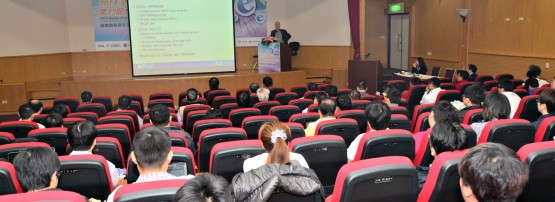
Recently I returned from two days in Taipei, firstly attending the 2014 Global IPv6 Summit, and then meeting with a number of APNIC members.
As usual, the Taipei summit was very well supported, both by the local internet community and also by the administration, with Vice-Premier Mao Chi-kuo opening the Summit.
In my keynote presentation, I recalled my first visit to Taipei, in 1998, which coincided with the announcement of the 3 millionth Internet user in the economy of Taiwan. This was celebrated in a major public and media event, featuring fireworks triggered by falling dominoes, and enthusiastic support from senior officials and industry figures.
In the 16 years since then, the Internet in TW has grown to a user population of some 20 million and is ready for further growth which will come with ubiquitous mobile broadband. My main message to the Summit was that IPv6 is now a proven technology in full production deployment in a number of major networks and that the next generation of mobile deployment in TW should include IPv6 from the start.
Without IPv6, mobile users will receive private IPv4 addresses, and traffic will flow via CGNs (carrier-grade network Address Translators) which will introduce cost and complexity. Further, any attempt to share these connections, through personal hotspots on mobile phones, or through dedicated wireless last-mile devices, will add another layer of NAT, making matters even worse. It can be expected that users of such connections will certainly suffer, knowingly or not, from a much-degraded service.
On the other hand, deployment of IPv6 will deliver public addresses to every device, and direct, unmediated connectivity between those devices and the Internet. With every IPv6 connection, IPv6 traffic will begin flowing immediately, to and from the many IPv6-enabled Internet services (Google, Facebook, LinkedIn and others); which will relieve pressure on existing CGNs, and avoid the need for further CGN deployment.
As I said to the Summit audience in TW, I have no doubt the ISPs that deploy IPv6 in their services will experience an immediate competitive advantage, which will flow down to their customers, and to their activities and businesses.
At the Summit, I also had to acknowledge the great support that TWNIC has given to their community, to APNIC and to the AP region as a whole. With TWNIC’s technical and business leadership, the Internet has grown very successfully and to the great benefit of their community. My thanks go to TWNIC Chair Prof Shian-Shyang Tseng and to the fantastic TWNIC staff for these achievements.
The views expressed by the authors of this blog are their own and do not necessarily reflect the views of APNIC. Please note a Code of Conduct applies to this blog.
